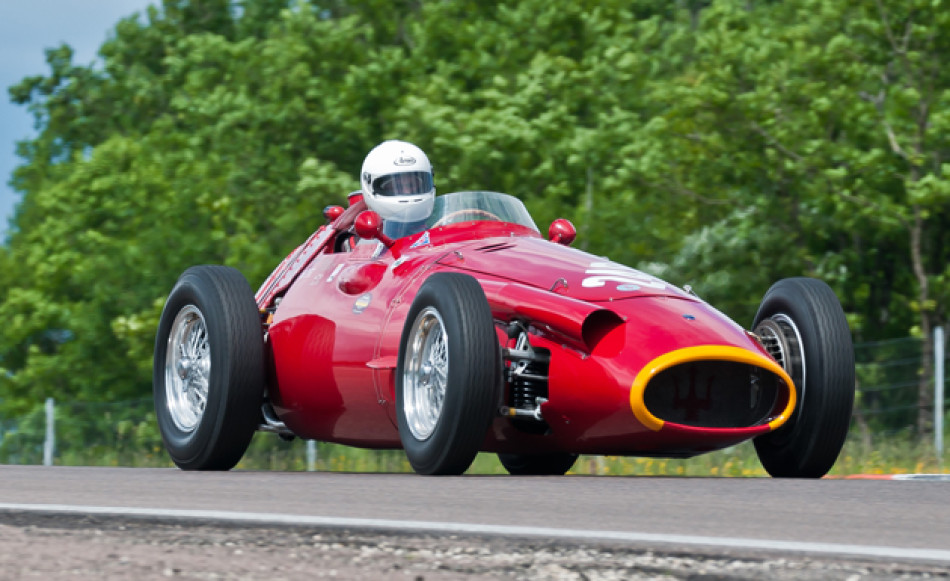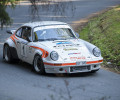Historic Motor Sport: latest decisions

The decisions taken in the area of historic motor sport will come into effect on 1 January 2014 and will be included in the FIA Yearbook, which will be published in the coming weeks.
FIA European Historic Sporting Rally Championship
In order to help build up a Championship of classic rallies, coefficients have been introduced from 2014 for events which are part of the FIA European Historic Sporting Rally Championship. The coefficient scale will range from one to three, one being a new event in the Championship and three being the highest coefficient for historically recognised events.
For the calculation of the final Championship classification, only the six best results of each Driver will be taken into account (from a possible total of 14). In order to be included in the classification, Competitors must also have participated in a minimum of four rallies of coefficient 3 (from a possible total of six Competitions of coefficient 3).
The Historic Acropolis Rally will be split into two distinct competitions, both coefficient 3, with one taking place on asphalt and the other on gravel.
Regarding the Sporting Regulations for the Championship, two new classes have been created to encourage and promote the participation of cars with a small cylinder capacity (less than 1150cm3): a C0 class in Category 2 and a D0 class in Category 3.
FIA Historic Hill Climb Championship
In order to encourage greater participation, exclusively historic Competitions (not linked to a modern event) counting towards the Historic Hill Climb Championship will be awarded a coefficient 2, which will double the number of "Championship" points which may be scored by Drivers. Moreover, any Driver taking part in a Competition outside of his Licence country will be awarded a "Championship" bonus point.
Formula Junior
Cars having been built in the period from 1958 to 1964 (and to 1965 for the Lotus 22 only) on a chassis produced according to the same specification as that of a Formula Junior car, and having been fitted with an engine of the original make, i.e. of Formula Junior specification, will be eligible for the FIA Lurani Trophy for Formula Junior cars.
The aim is to enable the reconversion of a car used in F3 in the past into a Formula Junior car – provided that it is fitted with a Formula Junior period engine and that the chassis was originally designed to run in either Formula Junior or Formula 3. This was the case of many Lotus 20, Lotus 22, Elfin and Lynx cars in the past.
As of 1 January 2014, use of the Ford 109 E engine block reproduced by Geoff Richardson according to the original Ford specification will be authorised in Classes FJ1 and FJ2. In Class E2, Category FJ/2 E of the Lurani Trophy, Formula Junior cars fitted with a Ford engine and a gearbox with 4 ratios of the original make and type used in period will be admitted.
Appendix K
All articles in Appendix K dealing with rollbars, rollcages and roll over protection structures have been merged and grouped under a single Appendix VI to Appendix K.
The definition of Period E has been adapted to allow Grand Prix and Formula 3 cars from the years 1946 to 1960 to register in this period. In principle, Period E covers cars from years 1947 to 1961. However, it is more logical and consistent to register Grand Prix and Formula 3 cars from 1946 in this category rather than in Period D (1931-1946).
Concerning Article 7.3.2 of Appendix K, it was decided to accept cars of Period J2 (1986-1990) with a cylinder capacity greater than that authorised according to the 1990 Appendix J in historic sporting rallies. These cars will have to conform to the specifications of the 1989 Appendix J. According to Appendix K, the regulations of the period that take precedence must be those from the last year of the period concerned. However, in 1990, an amendment to Appendix J set a new limit on the cylinder capacity for normally aspirated cars, lower than that applied in previous seasons. Consequently, strict alignment on the 1990 Appendix J would make certain cars from the years 1986 to 1989 ineligible to take part in historic competitions.
Within the framework of a Standard procedure for the acceptance by the FIA of replacement mechanical parts for historic cars, cylinder heads rebuilt by Swiftune may be used instead of the original cylinder heads on the Cooper 960, 1070 and 1275S, Sprite/Midget 1275 and BL Marina. These cylinder heads must be marked with the name "Swiftune" in their casting.
In the context of the alignment on the period regulations, the make of carburettor is free for cars of Period G1 provided that it can be proved that this make was used in period on the model of car concerned.
Article 5.5.2 ("Fuel system") of Appendix K will be amended to indicate that the maximum fuel capacity prescribed in period must not be exceeded. The regulatory prescription of the period takes precedence over the information given on the Homologation form of the car concerned.
By means of Appendix VII ("Specific to certain cars") to Appendix K, it will be clarified that the correct bore of the original cylinder of the Plymouth Variant is 92.1 and not 90.6 as indicated on Homologation Form No. 1249.
HTP (Historic Technical Passport)
The fees charged by the FIA to ASNs for HTPs will remain unchanged in 2014 in relation to 2013.
In view of the many HTP renewals expected in the coming months (all HTPs issued before 2010 are due to expire on 31 December 2014), special fee conditions have been ratified. If the request for renewal of an HTP issued before 2011 is submitted by 30 September 2014, a rebate of 50% on the applicable fee will be granted. If the renewal of an HTP issued before 2011 is requested between 1 October 2014 and 30 September 2015, a discount of 20% will apply. Beyond this deadline, the full fee will apply.
Any renewal of an HTP validated after 2011 will benefit from a 50% rebate on the applicable fee, provided that the request for renewal is submitted before the document expires.
The validity of HTPs is five years. All requests for renewal must be based on the latest version of the international HTP.

 Facebook
Facebook Twitter
Twitter






